

Topics on the Page
Overview of the Debate
Federalists
- Alexander Hamilton
- James Madison
- John Jay
Anti-Federalists
- George Mason
- Robert Yates
- Patrick Henry
- Mercy Otis Warren
Differences Over the Constitution
The Federalist Papers
Notable Topics in the Federalist Papers
- Factions
- Checks and Balances
- An Independent Judiciary
States Rights vs. Federal Power in Modern-Day Environmental Policy
 Cross-Link: The Clean Air Act
Cross-Link: The Clean Air Act
An Advertisement of The Federalist - Project Gutenberg eText
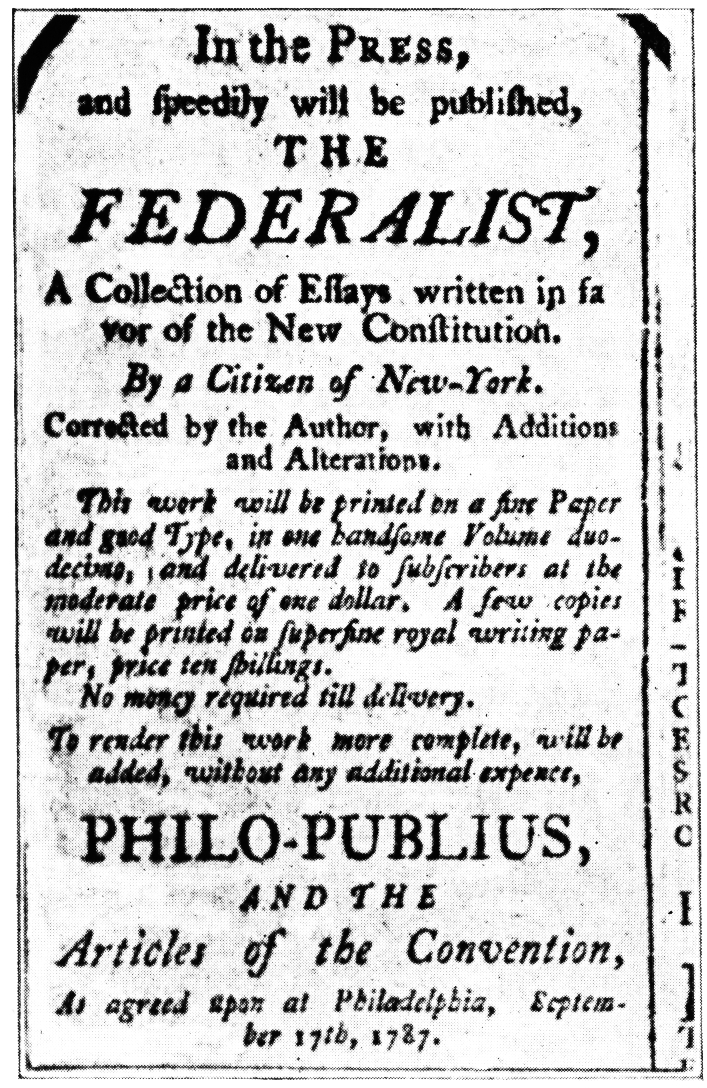
Focus Questions:
-
What were the key points of debate between Federalists and Anti-Federalists?
-
Why were the key ideas within the Federalist Papers so important?
 Primary Sources
Primary Sources
-
Seminal Primary Documents to Consider:
 The Annenberg Guide to the United States Constitution: What it Says, What it Means
The Annenberg Guide to the United States Constitution: What it Says, What it Means
Here is a crash course video Giving an overview of the Constitutional Convention as well as Federalists vs. Anti-Federalists.
Differences between Federalists and Anti-Federalists
The debate over the ratification of the U.S. Constitution is known for the sharp divide it created among the newly independent states.
- The government that it created was weak and many saw a need for a stronger federal government. The Constitution was thus proposed, created, and sent to the states for ratification.
- The divide was intense and in most states, ratification just barely happened.
- It did happen, however, in all 13 states but the debate over it lasted for years and has been used over and over again to help show just how some of these founding fathers really interpreted what was being said in the Constitution and their actual intentions.
Click here for a video explaining the debate between the Federalists and Anti-Federalists in a very entertaining manner.
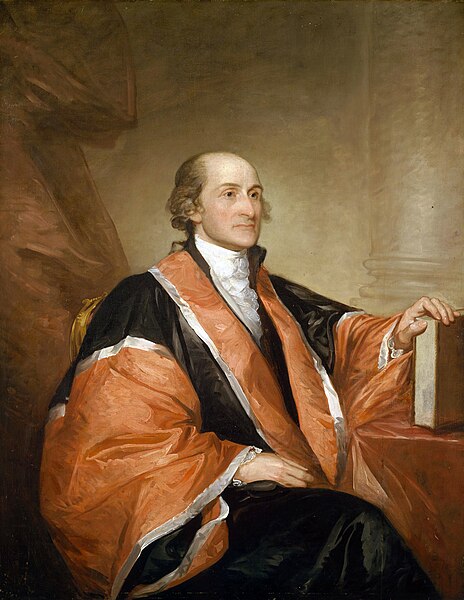 |
| John Jay |
Federalists
The Federalists were a group of thinkers and people loyal to the belief that a change was needed from the Articles of Confederation, and that change was the Constitution.
- The Articles created a weak central government and left a lot of the power in the hands of the state governments.
- The Constitution on the other hand created a strong central government with weaker but still effective state governments.
- The Federalists desired this and began to argue for its ratification.
- George Washington was also a known supporter of ratification and can be seen as the driving horse behind his home state, Virginia, ratifying it.
Here is a short Biography on James Madison including a short video clip.
Anti-Federalists
The Anti-Federalists came on to the scene just as quickly as the Federalists did. They saw the Constitution as a change to everything they had worked for. The Articles created a weak central government because the colonists were sick of a strong central government which they witnessed in England.
George Clinton
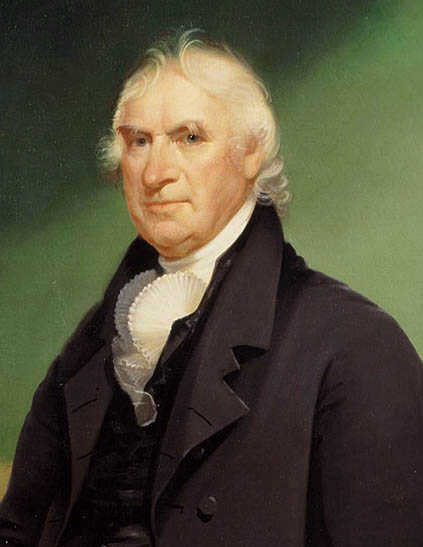
- They thought that this change would mean the U.S. would be heading in the direction of a monarchy. The power of the presidency alone was enough to make them think that a monarchy would be established. They favored states rights and believed that was the original intention of the Revolution.
- Each of the 13 states had a strong anti-federalist faction within, and ratification of the Constitution proved extremely difficult because of that. Luckily for everyone, some of their qualms were resolved including the Bill of Rights.
- Other opponents of ratification included one of the first to speak out publicly, Patrick Henry, along with several important figures under the Articles of Confederation.
- The Anti-Federalists had just as much of a chance to win and it was because of that defeat that many of them are not nearly as well known as those involved with the Federalists.
The Antifederalists: The Other Founders of the American Constitutional Tradition?
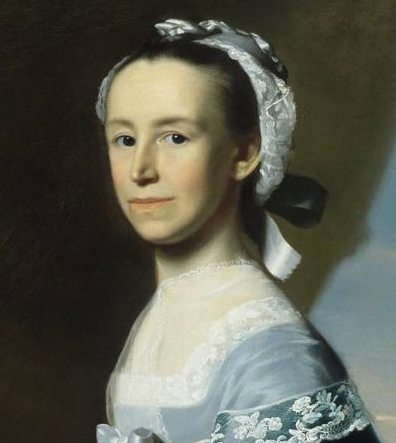

Mercy Otis Warren
Anti-Federalist Mercy Otis Warren wrote many political pieces under the pseudonym "A Columbian Patriot' in support of the Ant-Federalist ideals
- She was also from Barnstable/Plymouth Massachusetts, making her an important figure for both New England and Massachusetts history as well.
About the Correspondence Between John & Abigail Adams, Massachusetts Historical Society
The Debate over the Ratification of the Constitution
Once ratification was proposed and the two sides formed, the debate began. It took a little while longer for the Anti-Federalists to come out publicly, but each state witnessed an intense battle between two completely different sides.
- The Federalists were arguing for the change. They did not want a system where each of the state governments would be rivaling one another for the control.
- They needed a central government that would maintain the union. The Constitution brought with it stability and the promise of growth as a unified nation.
- In their view, the Articles had the feeling of disarray where as the Constitution would make it so the central government could enforce laws of states and get things done.
- The Anti-Federalists were opposed to this change because they feared the worst. They enjoyed state governments and felt it necessary to have public debate and citizen awareness in policies.
- The people had an obviously larger impact on politics during the time of the Articles but it was harder to get anything accomplished because of the enormous barriers that were set up between everything.
- They feared the Constitution would create a monarchy and that there was no protection of their civil liberties.
- It took some time, but soon each state had their debates and argued over and over again until the vote happened with them all one by one voting for ratification.
- Several states had very close races, but only 9 out of the 13 were needed for ratification so it most likely would have passed had a few states voted against it.
- On March 4, 1789, New Hampshire became the 9th state to ratify the Constitution and as such, it was enacted and the newly formed government came into play.
- It should be noted that even though the Federalists were against the addition of a Bill of Rights it was used as a compromise that helped get many Anti-Federalists to accept ratification.
- All 10 of them were added shortly thereafter and the Anti-Federalists were able to leave their mark.
 This 4-minute video from the Gilder Lehrman Institute of American History provides a quick rundown of the differences between the federalists and the anti-federalists!
This 4-minute video from the Gilder Lehrman Institute of American History provides a quick rundown of the differences between the federalists and the anti-federalists!
- The HBO miniseries John Adams shows several examples of the debate between the Federalists and Anti-Federalists on exactly what kind of government they would create.
- This youtube clip shows a debate between Alexander Hamilton and Thomas Jefferson on the nature of a National Bank and how this would affect the central government.
 This song is a rap interpretation of the debate over the National Bank recorded for the musical "Hamilton".
This song is a rap interpretation of the debate over the National Bank recorded for the musical "Hamilton".
- All of the songs in the play outline the events of the Revolution from Hamilton's perspective in a fun, memorable, and historically accurate way.
- Warning: language may be unsuitable for younger students.
 For more on the Constitutional Convention and the process of changing the government, see Ratification: The People Debate the Constitution, 1787-1788, Pauline Maier, Simon & Schuster, 2010.
For more on the Constitutional Convention and the process of changing the government, see Ratification: The People Debate the Constitution, 1787-1788, Pauline Maier, Simon & Schuster, 2010.
- As historian Richard Brookhiser noted in his review of Maier's book, "both sides [Federalists and Anti-Federalists] won something. The Constitution prevailed, but the spirited resistance encouraged the First Congress to propose the amendments now known as the Bill of Rights" (The New York Times Book Review, October 31, 2010, p. 20).
 Learning Plans
Learning Plans
- This is a lesson plan from PBS that uses clips from their documentary "Rediscovering Alexander Hamilton" to explore the debate between Hamilton and Jefferson.
- This lesson asks students to engage with the documents and analyze the attributes of Federalists and Anti-Federalists. It would be better if there was a class-wide debate or discussion afterwards, including their modern opinions to see how this debate is present in their daily lives.
Here is an article written by three anti-federalist newspaper authors from Western Massachusetts discussing their 'dissent' that slavery was allowed to continue in the South under the recently ratified Constitution
Many forget that what was happening in the United States at this time had never happened before. People had not been allowed to freely elect their leaders and be active in politics in this manner before and, this led to many people working on theories and explanations about them. Democracy and Republicanism were and still are complex notions, especially for people who had never really experienced them before.
The Federalist Papers served as a way for three prominent Federalists to speak their mind about the Constitution and why it should be ratified.
- They hoped to influence all those confused by the proposed changes as to why this system would be better.
- Over the years, these papers have been used countless times, in both Supreme Court cases and in many writings, to try and show the original intent of the framers.
- They have helped shape our knowledge of this intent and did wonders for the people during that time period. Many important and relevant topics came out of these papers and there were also specific ones that have been cited far more frequently then others.
- The topics included such concepts federalism, factions, checks and balances, and the independent judiciary. The notable papers included, most importantly, #10 along with 1, 9, 39, 51, and 78.
 For lesson plans, see Federalist Papers from the Constitutional Rights Foundation
For lesson plans, see Federalist Papers from the Constitutional Rights Foundation
 Protofemninist Responses to the Federalist-Antifederalist Debate.pdf
Protofemninist Responses to the Federalist-Antifederalist Debate.pdf
This essay, "Protofeminist Responses to the Federalist-Antifederalist Debate" by Eileen Hunt Botting discusses women's rights and the some of the origins of the feminist movements in the U.S., especially in this momentous debate that would certainly have an impact on the future of the country. Geared more towards It was published alongside a reprint of The Federalist Papers and, while perhaps more useful for an older audience (i.e. high schoolers), certainly asks the question of where women fit into this debate.
Notable Topics in the Federalist Papers
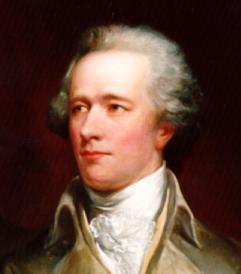 |
| Alexander Hamilton |
Beginning with Federalist #1 the writers, in this case Alexander Hamilton, wanted to give an introduction of what they were setting out to do. It was used to explain what their side believed in and what they hoped to accomplish.
Hamilton here writes about federalism and how the desires of federalists are much better for the nation then the desires of the Anti-Federalists.
The Constitution, to them, is better then the Articles of Confederation and here is where they began to explain why they feel that way along with an outline of what is about to come.
Factions
Federalist #9 was also written by Alexander Hamilton and it begins to talk about the concept of factions.
- Here Hamilton disputes the Anti-Federalist claim that having a federal union (which was what the Federalists were proposing to do) would eventually fail since a republic as a system was only meant for small pieces of area.
- Instead, Hamilton argues that the union will help safeguard against factions, which if left unprotected against, will end up unraveling a republic.
- Factions are simply groups of people with special interests that are different from those of the majority, usually it is in terms of politics
Federalist #10 was written by James Madison and is considered to be the most notable of all the Federalist Papers. In this piece Madison continues on with Hamilton’s thought process towards factions by writing about how to actually protect the union from them.
- Again the Federalists look towards the Anti-Federalist claim that not having a federal union would be better for maintaining the republic by explaining that the union is in fact the best way to preserve a republic and that little territories instead of a centralized government would make situations far worse and that would be the cause of the end of a republic, not the federal union.
- In order get rid of the negative effects factions can have, this essay proposed to have a representative democracy instead of direct democracy.
- This document is so important because it basically shows how the Federalists interpreted the Constitution and is now constantly used to do just that.
Federalist #39 was also written by Madison and he writes about how the Constitution is somewhat of a balance between a republican government and a federal government.
Checks and Balances
Federalist #51 like Federalist #10, is very important and constantly referenced. This was also written by James Madison and brings in the very important topic of checks and balances.
- This paper advocated for a separation of government and a system for those separate departments to be able to check each other and keep a balance.
- The point of this system is obviously so that no department can gain enough strength so that they in fact have all of the power. By having this system, different governmental departments, mainly the three branches, will be held accountable for their actions.
- Madison wrote that "you must first enable the government to control the governed; and in the next place oblige it to control itself."
Independent Judiciary
Federalist #78 was written by Alexander Hamilton and brings into play the topic of an independent judiciary.
- The Anti-Federalists felt that the judicial branch would be too powerful and this paper worked on dispelling that fear by showing that this branch would be, in fact, the weakest of the 3.
- Hamilton wrote that the judiciary branch will always be the least dangerous.
- The judicial branch has "neither the horse nor will, but merely judgment..." It can never attack either of the branches, but it has the power to defend itself against the two.
- Hamilton concurred with the idea that "there is no liberty if the power of judging be not separated from the legislative and executive powers."
- Although the members of the judiciary branch are appointed for life, Hamilton says that that is so they can best perform their jobs. Permanency is what gives this branch its strength.
- On top of that, Hamilton points out that it would take a very qualified individual to be able to be a member of the Supreme Court, so the amount of people able to do that would be very few.
- Also, there would be a lot of work for the Supreme Court to do. Therefore, it would be best if the most qualified people were able to stay in their positions and do all the work that would be required of them.
A Summary of the ideas of The Federalists and Anti-Federalists
A collection of resources for teaching Federalists v. Anti-Federalists can be found here
Who won? The Judicial Learning Center provides this fun challenge for students to learn about the debate and then test their own knowledge in a short, four-question quiz at the end of the page.
- Click here to play "Power Play" where you argue for either federal or state powers.
Time Line from Articles of Confederation to the Constitution
States Rights vs. Federal Power in Modern-Day Environmental Policy
A Running List of How President Trump is Changing Environmental Policy, National Geographic
How the U.S. Protects the Environment, from Nixon to Trump, The Atlantic (March 29, 2017)
In Trump Era, Democrats and Republicans Switch Sides on States' Rights, Reuters (January 26, 2017)
The States Resist Trump's Environmental Agenda, Earth Institute, Columbia University (May 7, 2018)

Comments (0)
You don't have permission to comment on this page.